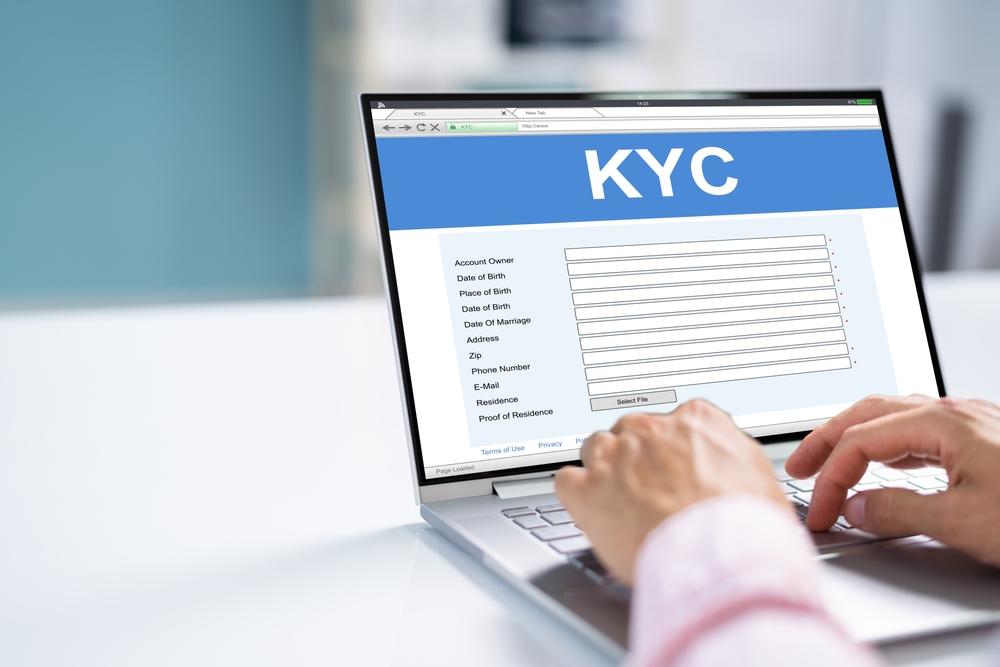- 1. Fill out the Home Loan Application Form & Attach the Documents
- 2. Cover The Processing Cost:
- 3. Discussions with the bank
- 4. Assessment of the Records
- 5. The Process of Sanction/Approval
- 6. Processing The Offer Letter
- 7. Completing the Property Records and Conducting a Legal Verification
- 8. Completing a Technical Inspection and the Site Assessment
- 9. The Final Loan Agreement
- 10. Endorsing the loan contract
- 11. Disbursement of Loan
Your path to owning your dream home begins with seeking a home loans, which can be an exciting activity. Do not get intimidated by seeking a stepwise guideline on how to get this loan. All banks follow the same procedure, although there may be minor disparities between creditors. To apply for a home loan without stress and strain, you can adhere to the following steps
1. Fill out the Home Loan Application Form & Attach the Documents
Application is the first step in the process of applying for a home loan. A few basic details about the applicant are needed for this loan application. Typically, this comprises:

- The personal details of the applicant (Name, Phone number, etc.)
- The residential address of the applicant
- The monthly or yearly income of the applicant
- The educational information of the applicant
- The employment details of the applicant
- The property details on which the loan is applied
- The estimated cost of the property
- The present means of financing the home property
The next step is to fill out the formal application and include all of the legitimate documents that the bank requires for Home Loans. Typically, this comprises of:
- Income proof
- Identity (or ID) proof
- Age proof
- Address proof
- Employment details
- Educational proof (school/diploma/degree certificates)
- Bank statements
- Property details on which the loan is applied (if finalized)
15 Essential Documents Needed in 2024 to Get a Home Loan:
- Loan application form.
- 3 photographs passport sized.
- Identify proof
- Residence proof
- Bank Account Statement/Passbook for the last 6 months.
- Signature verification by bankers of the applicant.
- Liabilities statement and Personal Assets.
- Property detailed documents
- Salary Certificate (original) from the employer. (salaried individuals)
- Form 16/IT Returns for the past 2 financial years. (salaried individuals)
- IT Returns/Assessment Orders copies of the last 3 years. (self-employed professionals)
- Challans as proof of Advance Income Tax payment. (self-employed professionals)
- Proof of business address for non-salaried individuals. (self-employed professionals)
- IT returns/Assessment Orders copies of the last 3 years. (Self-Employed Businessmen)
- Challans as proof of Advance Income Tax payment. (Self-Employed Businessmen)
List of Documents Required for NRI Applicants who apply for Home Loans:
- Document establishing KYC.
- Salary Certificate from employer stating in English the name (as per passport), designation, passport number, date of joining, and latest salary.
- Last 3 to 6 months’ salary slips reflecting variable components like incentives, overtime, etc.
- Latest IT Returns (for applicants filing IT returns in the country).
- For Self-employed NRIs, business documents like Trade License, Sponsor Agreement, Power of Attorney, etc.
- Copy of Passport showing the page of residence visa.
- Proof of employment by the Government of the residing country like work permit, labor contract, etc.
- Documents related to the Property with cost estimates from an Indian Architect or Engineer.
- For Salaried NRIs, income documents attested by embassy officials are required if there’s no documented evidence for salary credit or fund remittance to India is available.
- Bank statements copy from overseas for the past 6 months.
- Last 6 months NRO/NRE bank statement.
- If the applicant is unavailable in the country at the time of signing documents, Power of Attorney needs to be produced by the person acting on their behalf.
List of KYC Documents for Home Loans Application:
Some of the usual documents admitted as KYC are mentioned below:

Photo ID Proof (Any One Required):
- Passport
- PAN card
- Driving License
- Voters ID Card
- Residence Proof (Any One Required):
- Electricity Bill
- Ration Card
- Telephone Bill
- Employment Letter
- Passbook or Bank Statement with address
- Proof of Age:
- PAN card
- Passport
- Birth certificate
- Driving license
- Bank passbook
- Marksheet from 10th class
- List of Documents Required for Loan Guarantor
- Liabilities Statement and Personal Assets.
- 2 photographs passport sized.
- Identify proof.
- Residence proof.
- Proof of business address.
- Signature identification from present bankers.
List of Property Documents Required for Home Loan:
- Deed of Sale or Sale Agreement or Share Certificate (original) in case of a cooperative society.
- Receipts for taxes paid for Building and Land, certificate of possession, and a certified sketch of the location of the property from revenue authorities.
- Allotment Letter from Society/Housing Board/Private Builder.
- Receipts of advance payments for flat purchases.
- Certificate of non encumbrance encompassing the last 12 years/30 years.
- Receipt of land tax payment and certificate of possession issued by revenue authorities
- Permission letter from Appropriate Authority.
- Approved building plan (showing floor plan for flat purchase).
- Original No Objection Certificate issued under the ULC Act, 1976.
- Copy of relative order if agricultural land is being converted.
- No objection certificate (NOC) from Builder/Housing Society.
- Detailed estimate of construction cost.
- Letter from Society/Builder/Housing Board mentioning their bank and account details, for installment remittance.
- Applicable for purchase of land plot, a declaration by loan borrower stipulating the date by which to construct a house.
- Report from a lawyer as per standard format.
- Report stating the valuation of property in a standard format by an impaneled valuer.
- Post closure of loan, documents required for handover of original Property documents.
- Power Of Attorney for collecting original documents of the property.
In Case of the Borrower’s Death:
- Letter requesting handing over of Property documents from Legal Heir/Nominee(s).
- Letter relinquishing the right to Legal Heirs/Nominees for Property documents handover
- In addition to the documents already listed, the banks can request any additional documents they believe are required for the loan sanctioning and verification procedure.
2. Cover The Processing Cost:
After submitting their formal application and all required documents, the applicant must pay the bank’s processing fee. To keep the applicant’s loan account open, this sum is collected. A few pieces of private documentation (such as postdated checks, IT certificates, etc.) must be sent annually.
A bank’s processing fee typically consists of:
- varies between 0.25 and 0.50 percent of the loan amount requested.
- If the candidate, for instance, applies for a home loan of Rs. 15 lakh, the processing fees will be, respectively, Rs. 3,750 (at 0.25%) and Rs. 7,500 (at 0.50%).
- The bank then pays a commission to the agent managing the applicant’s home loan application; this commission is partially deducted from the processing fee that the applicant has paid. Even though most banks have a set fee schedule, it is negotiable. Attempting to negotiate the processing fee is not illegal.
Note: There will be a loan processing fee charged by each bank. On the other hand, some banks provide home loans with no processing fees.
3. Discussions with the bank

After submitting an application and completing all required paperwork, the candidate must wait for the bank or relevant financial institution to review their files. Usually, it takes a day or two, or even less if the paperwork is submitted correctly.
But occasionally, the bank might require a face-to-face meeting for the applicant to visit the bank before approving the loan. This is done, to learn more about the applicant and determine whether or not they can afford to return the loan plus interest.
4. Assessment of the Records
A bank looks through an applicant’s following information:
- Residential address (both current and past)
- The location of their employment
- The employer’s qualifications
- Contact number at work
- Contact number for the residence
Note: To confirm the applicant’s information, a bank representative visits the applicant at home or work. Occasionally, references that the applicant lists on the application are also examined. As a result, there can be unambiguous trust between the parties.
Remember that millions of people apply for home loans every day, so for the bank to process the application quickly and approve it, the applicant must be sincere throughout the process.
The bank will not tolerate any fraudulent activity or fake documents. It is illegal and may result in more serious issues. The application form and supporting documentation are evaluated by the bank authority as soon as they are submitted, and the processing fee is received.
5. The Process of Sanction/Approval
The approval or sanction stage is one of the most crucial phases in the home loan application process. This phase may result in an advantageous or disadvantageous consequence. Everything is based on the bank.
Your chances of approval drop if the bank is unhappy with any of your documents. However, if everything goes according to plan, your loan will be authorized or sanctioned quickly.
A bank will typically thoroughly review the following documentation before approving a home loan:
- Details about qualifications, age, and experience.
- The bank transactions about the applicant.
- The annual and monthly earnings.
- The kind of work the individual seeks and their present employer.
- The type of business (only relevant for independent contractors).
- the capacity to pay back the loan balance plus the agreed-upon interest rate.
The bank determines and notifies the applicant of the maximum loan amount they are eligible for based on the information provided above. Ultimately, this is carried out with a formal letter of sanction. It may be fully or partially disbursed, with the applicant needing to fulfill a few policies before funds are released.
6. Processing The Offer Letter
The bank then issues a certified offer letter that includes the following information as soon as the loan is sanctioned or approved:
- The amount of credit that has been approved.
- interest charged on the entire loan balance.
- whether there is a variable or fixed interest rate.
- The tenure details of the loan.
- The way that loans are repaid.
- Conditions of the home loan, including terms and policies.
A copy of Acceptance
The applicant must sign a duplicate copy of the offer letter for the bank’s records after accepting the terms stated in it. This is used to typically come with a set administrative charge. It is no longer used, though.
Note: Pay close attention to every detail that you read. Verify that the interest rate is applied by the percentage that was discussed and decided with the bank. Recall that you can bargain for a lower interest rate on your house loan. Always give it a shot and make the most of this to your benefit.
7. Completing the Property Records and Conducting a Legal Verification
The bank then focuses on the home the applicant plans to buy after the offer letter is formally accepted by them. The applicant may request a period to choose one, even if it hasn’t been decided upon.
Following the selection of the property, the applicant must:
Send the bank all original property documentation. They keep it until the loan is paid back. Additionally, this acts as security for the applicant’s requested home loan.
The following information is typically included in the original property documents:
- The seller’s name.
- the seller’s proof of address and identity.
- The property’s name.
- The property’s address.
- the sequence of written records if the seller is not the legal or primary owner.
- NOC (No Objection Certificate) issued by the principal lawful owner, if applicable.
- NOC from the cooperative housing society and the representative of the statutory development board.
- The bank will also need a NOC from the lessor if the land is currently leased.
Note: Until the home loan is fully repaid, the original property documents remain with the bank.
8. Completing a Technical Inspection and the Site Assessment
Every bank exercises extreme caution when approving loans and financing residential real estate. So, additional work is done, either a technical check or a double check. A property expert from the bank inspects the property an applicant plans to purchase. This individual might work for the bank, can be a civil engineer, or represent an architectural firm.
The purpose of the visit to the “site property” is essentially to confirm the information below:
- The phase of construction that it is in.
- Construction quality.
- Advancement in work.
- How long did it take to build the house?
- The way the house is laid out and if the local government has approved it.
- If the builder possesses the current certificates needed to construct on the property.
- Environmental issues and property valuation.
- The representative will look for the following if the construction is ready for sale or has already reached that stage:
- The age of the building.
- The upkeep of external or internal property.
- The tenure of the loan and whether the building satisfies the applicant’s requirements for loan eligibility.
- The building’s quality.
- The vicinity.
- The legitimate certifications needed to give the buyer possession of the apartment or house.
- The current mortgage is secured by the residence.
- The appraisal of the property.
- Plans for the building’s approval, adherence to legal requirements, etc.
Note: To comprehend the construction progress and win the applicant’s trust, a bank performs an appropriate technical check. The applicant cannot omit this crucial stage of the home loan application process.
Remember that there will be a cost associated with this technical check, which could be deducted from the upfront fee or charged separately.
Estimating the Value of the Site :
After the designated representative has completed the site’s technical examination, the value of the property is ascertained and verified. In essence, this is being done because of the rise in malpractices. In many instances, applicants have displayed the purchase of real estate at greatly inflated prices from affiliated entities to qualify for low-cost loans.
As a result, a bank’s risk of lending money to an applicant has increased. On the other hand, the bank can find the total loan amount more easily if the site estimates the amount.
Note: A few banks additionally charge a fee for the estimation check. Either the upfront payment covers it, or the applicant may be required to make additional payments.
9. The Final Loan Agreement
The deal’s final registration comes after the bank completes its technical and site assessment and the lawyer approves all the necessary documentation. The bank’s attorney completes, drafts, and has the loan documents signed and stamped.
10. Endorsing the loan contract
The applicant must sign the home loan agreement when the paperwork is finished. For the first 36 months (about 3 years) or for the length of time that both parties have agreed upon, he or she must turn in the postdated checks.
The original property documents must then be given to the bank. A video recording of the applicant giving the bank these documents can even be made by certain banks. This is for the safety, security, and evidence of the bank.
The MOE (Memorandum of Execution) stage carries a stamp duty that varies according to the state where the applicant applies. This obligation is borne by the candidate.
11. Disbursement of Loan
The loan amount is disbursed by cheque after the applicant signs the documentation and everything is in order legally. The applicant must first provide the bank with a few necessary documents, though, as these will represent his or her personal contribution to the home property.
The supporting documentation must be submitted if the applicant tries to obtain additional funding from outside sources. The bank will only then release a portion of the loan. The builder, the development/society authority, or the seller is always listed on the cheque
Nevertheless, there can be a few exceptional cases too. Say, for instance, the applicant has made excess payment from his/her own account, then the cheque is handed to him/her directly from the bank.
Remember that every day counts in this situation, so don’t let the house loan application process drag on after approval. Interest starts to accrue the moment the loan is approved and is charged thereafter. Thus, it is expensive every day! Therefore, make sure the cheque is received on the designated delivery date. Steer clear of paying extra interest.

